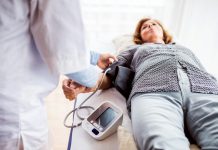
Imagine the heart as a city, with arteries as highways that supply it with everything it needs to thrive.
Now, what if those highways started to narrow and traffic couldn’t flow as freely?
This is essentially what happens in coronary artery disease (CAD), the most common type of heart disease and the leading cause of death worldwide.
It’s a condition that slowly creeps up, often going unnoticed until it’s serious. Let’s unpack what causes this, how it shows up, and what we can do about it, all without needing a medical degree to understand.
CAD begins when the heart’s arteries, which supply the heart muscle with blood, become damaged or diseased. The usual culprit? A build-up of fatty deposits on the arteries’ walls, known as plaque.
This can start early in life and progress silently, narrowing the arteries over years and reducing blood flow to the heart. But it’s not just about clogged pipes.
Inflammation plays a role too, causing the plaque to break open and form blood clots that can block blood flow entirely, leading to a heart attack.
But why does plaque build up in the first place? Several risk factors fan these flames, including smoking, high blood pressure, high cholesterol, diabetes, obesity, and not being physically active.
Some factors, like age and family history, are out of our control, but many risk factors can be managed with lifestyle changes and medications.
Symptoms of CAD can be sneaky or severe. Some people might not have any symptoms at all until they have a heart attack. Others might experience angina (chest pain), shortness of breath, or extreme fatigue. It’s like the body’s way of saying, “Hey, something’s not right here.”
Diagnosing CAD involves a mix of medical history, physical exams, and tests like ECGs, stress tests, and angiograms. These tests help doctors see how well blood is flowing and where blockages might be.
When it comes to treatment, the goals are to improve quality of life and prevent future heart problems. Lifestyle changes are the foundation. Eating a heart-healthy diet, exercising regularly, quitting smoking, and managing stress can all make a big difference.
Medications might be prescribed to manage symptoms and control risk factors like high blood pressure and high cholesterol.
In more severe cases, procedures like angioplasty (where a small balloon is used to open up the artery) or coronary artery bypass surgery (where a healthy artery or vein from the body is grafted to the blocked coronary artery) might be needed.
Research into CAD is ongoing, exploring everything from the genetic factors that make some people more susceptible to how lifestyle changes can reverse the progression of the disease.
One interesting area of study is looking at the role of inflammation in CAD and how targeting it could prevent heart attacks. Another promising field is the development of more sophisticated imaging techniques to detect CAD before symptoms even start.
In summary, coronary artery disease is a leading health concern, but it’s also one of the most preventable. Understanding the causes and symptoms can lead to early detection and treatment, significantly improving outcomes.
With advances in research and a focus on healthy living, there’s hope for keeping the heart’s highways clear and traffic moving smoothly for years to come.
If you care about heart health, please read studies about how eating eggs can help reduce heart disease risk, and Vitamin K2 could help reduce heart disease risk.
For more information about heart health, please see recent studies about how to remove plaques that cause heart attacks, and results showing a new way to prevent heart attacks, strokes.
Copyright © 2024 Knowridge Science Report. All rights reserved.



